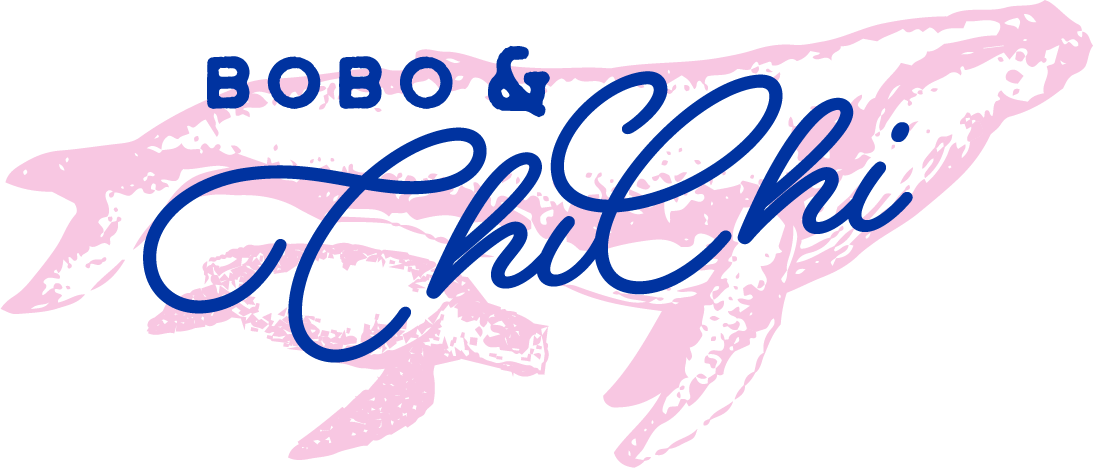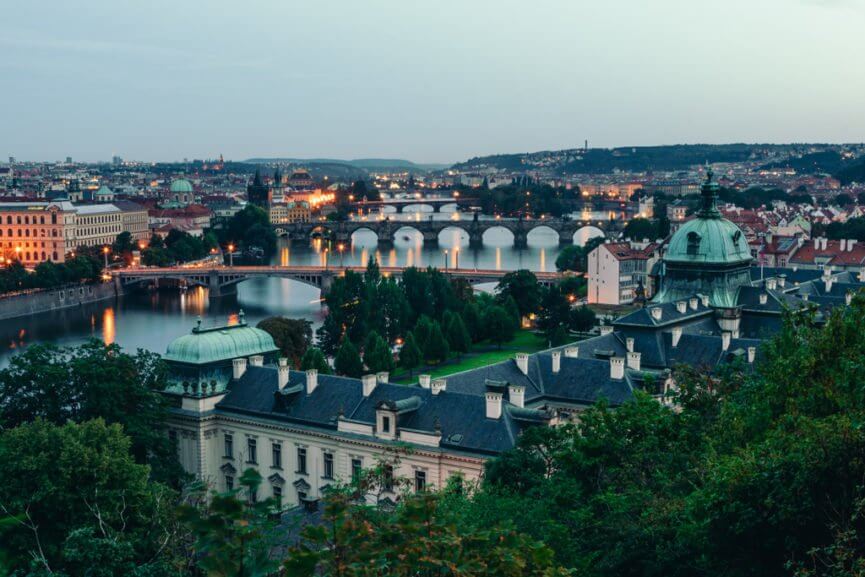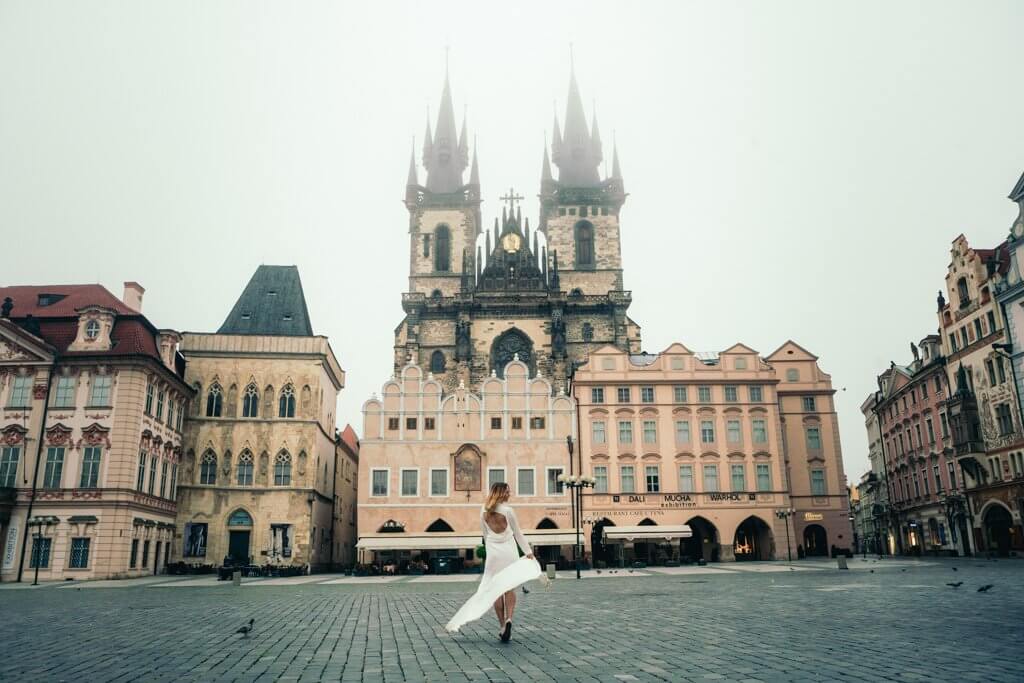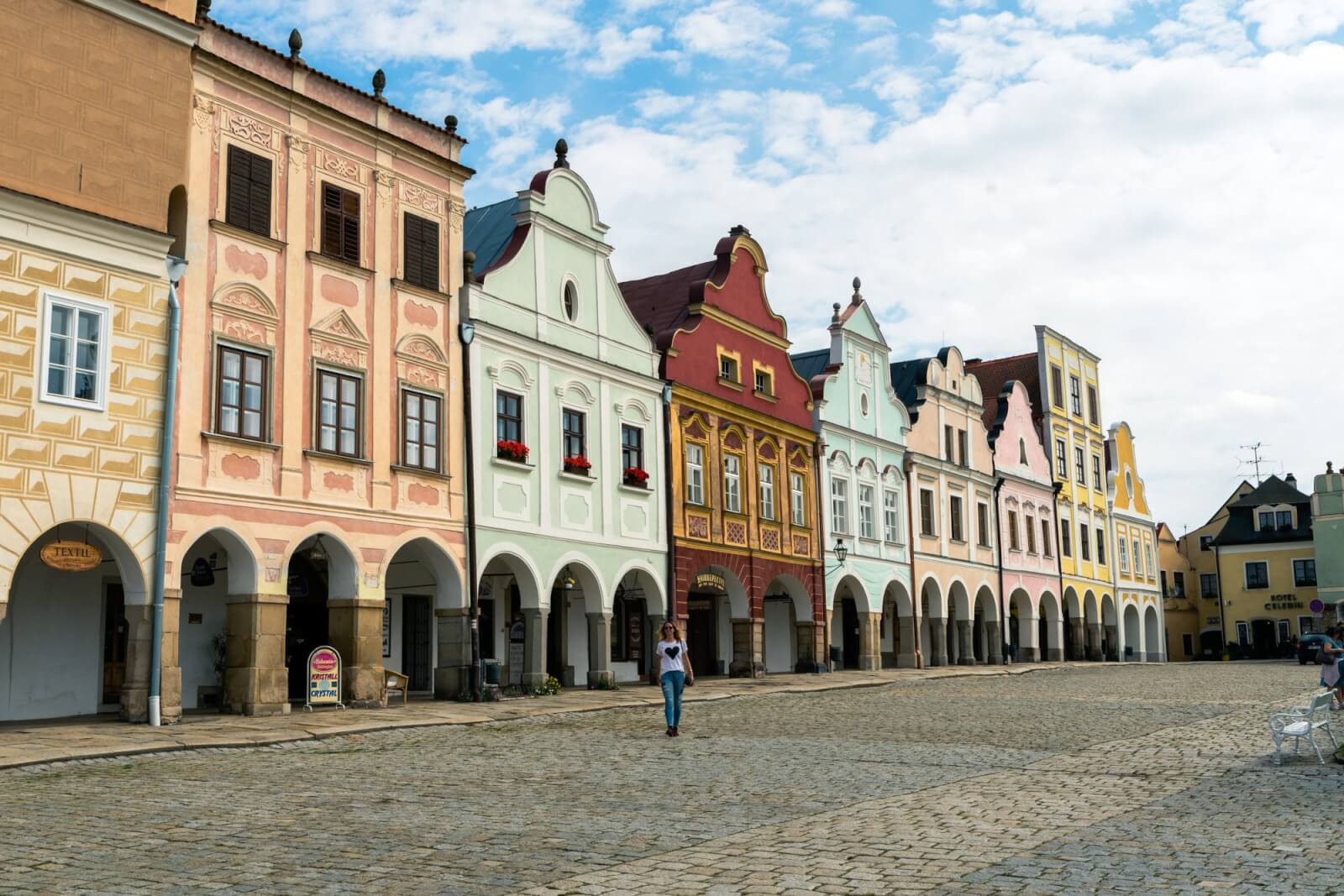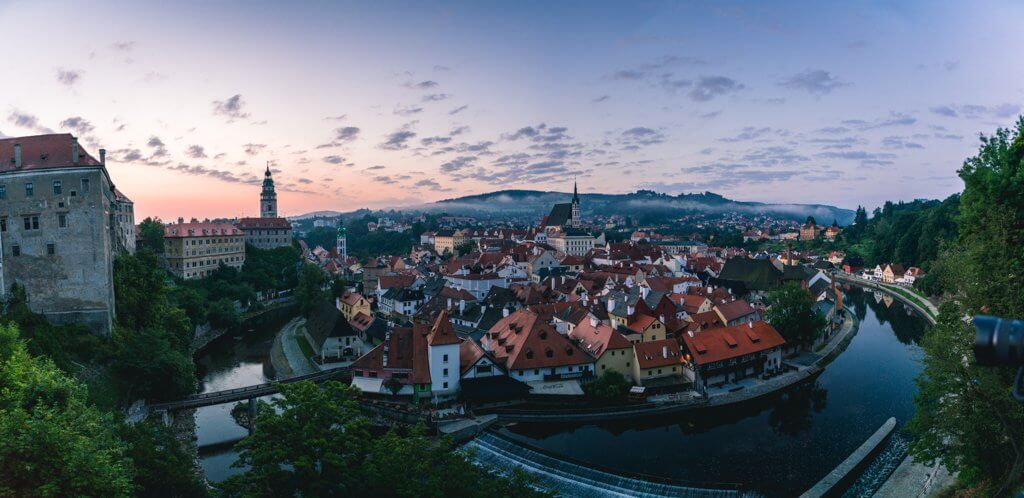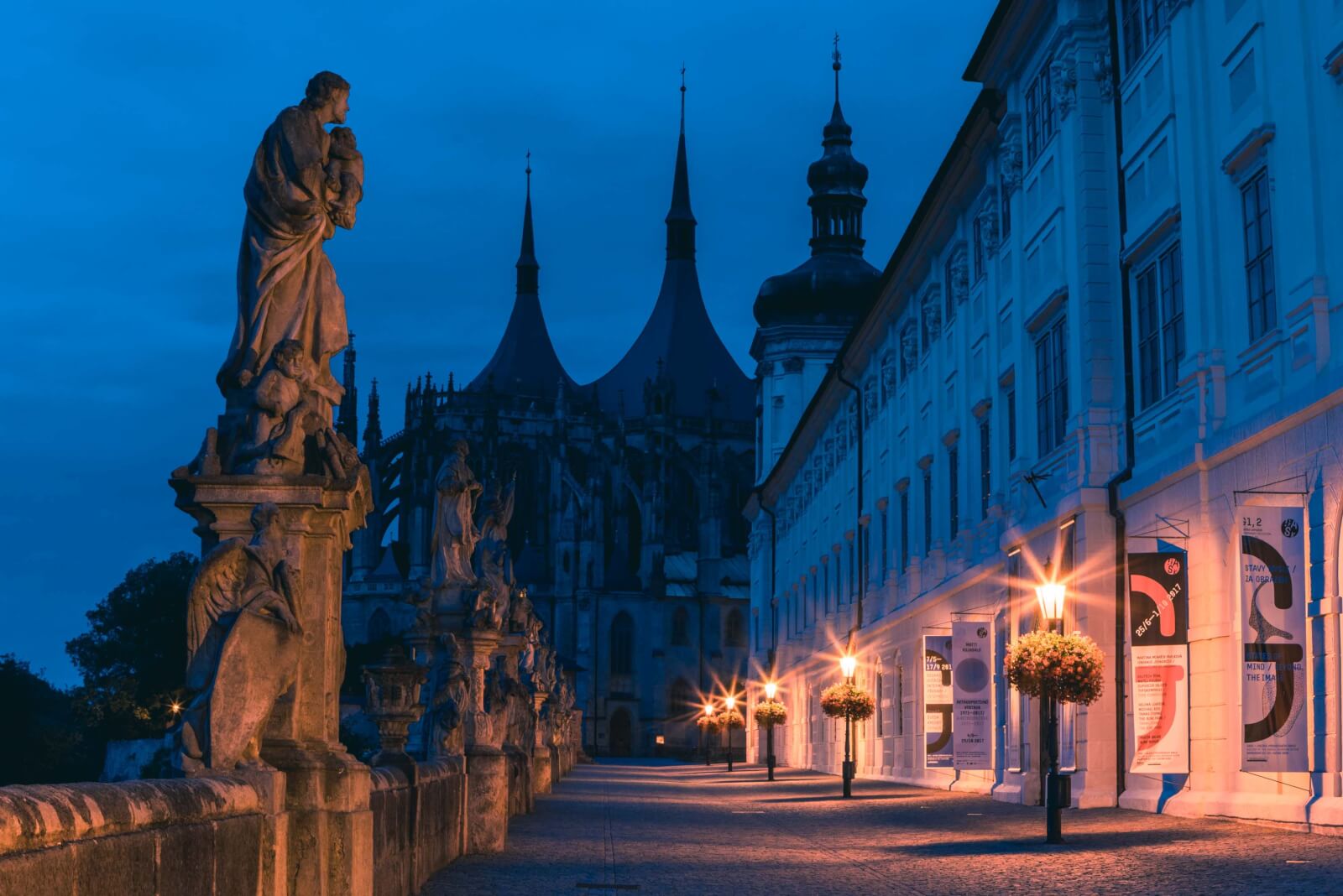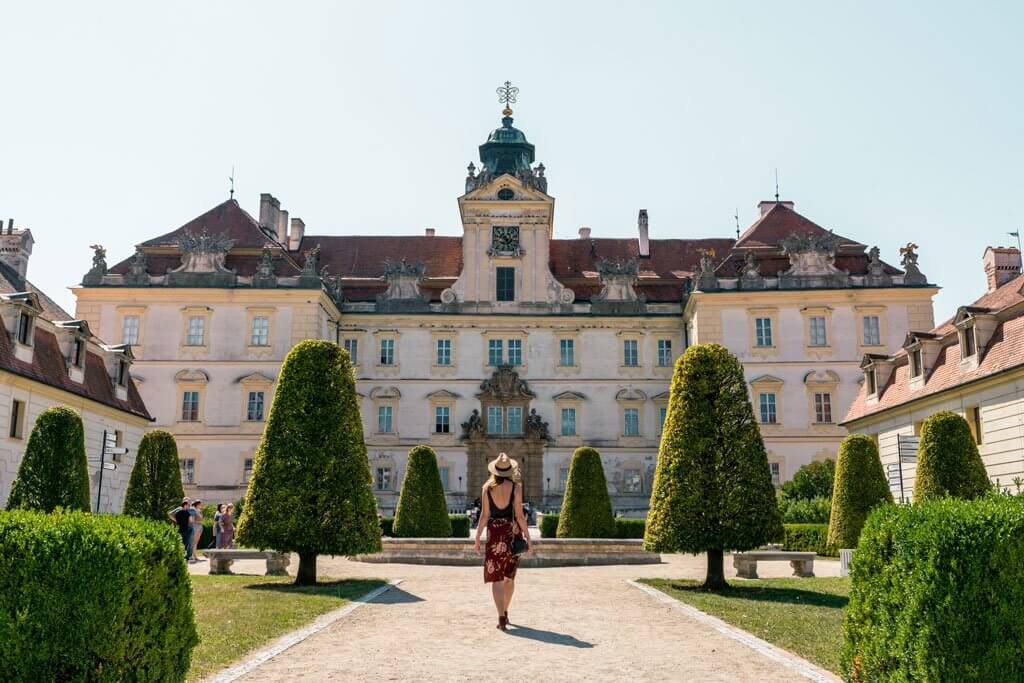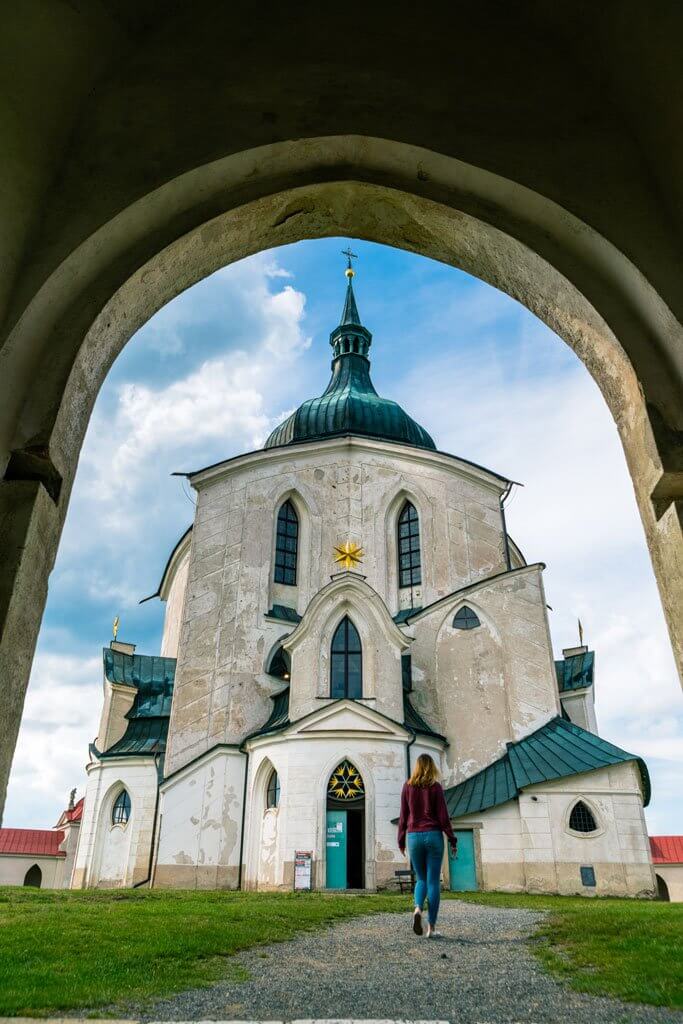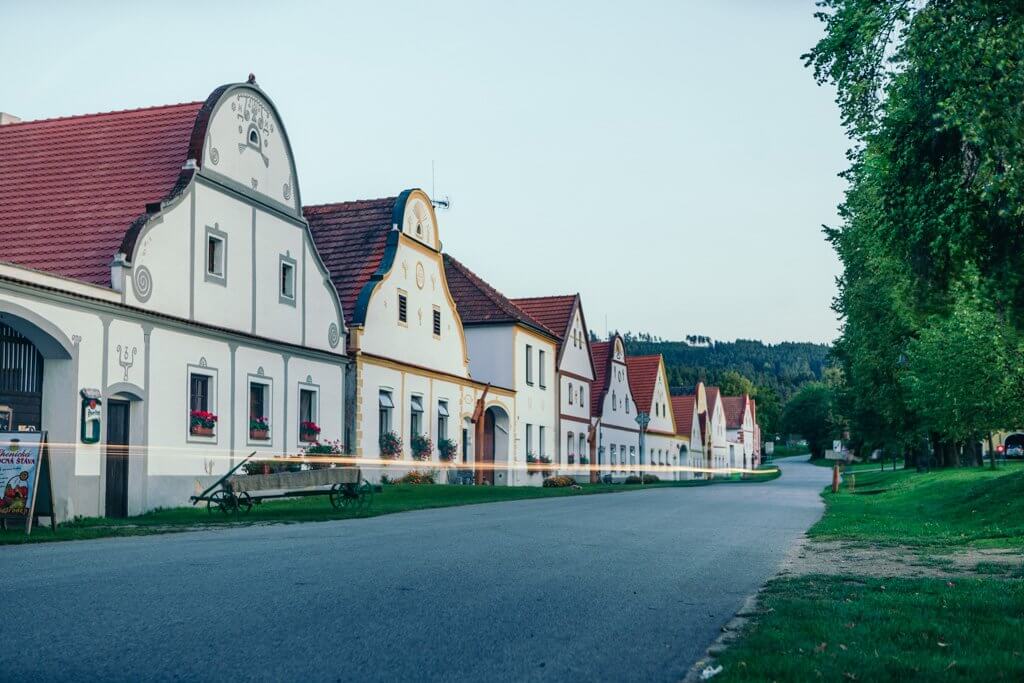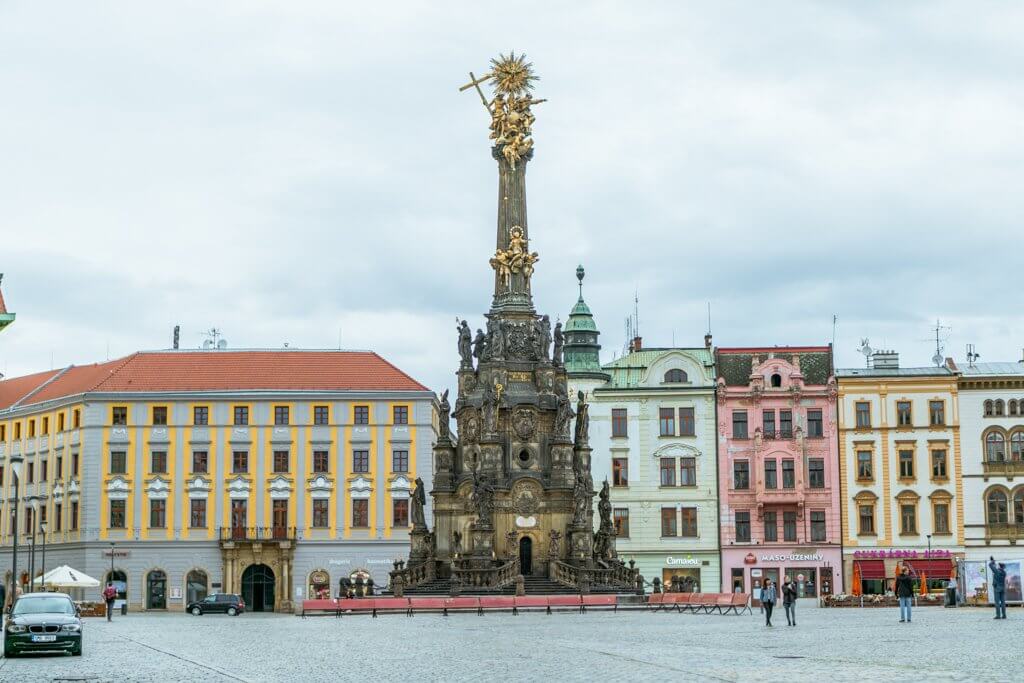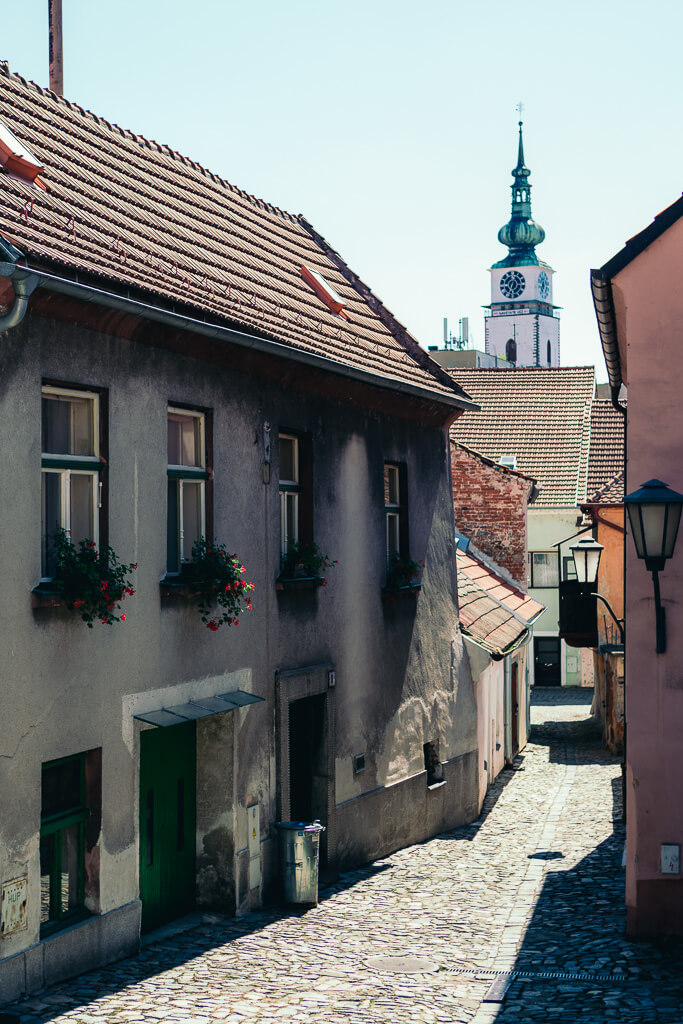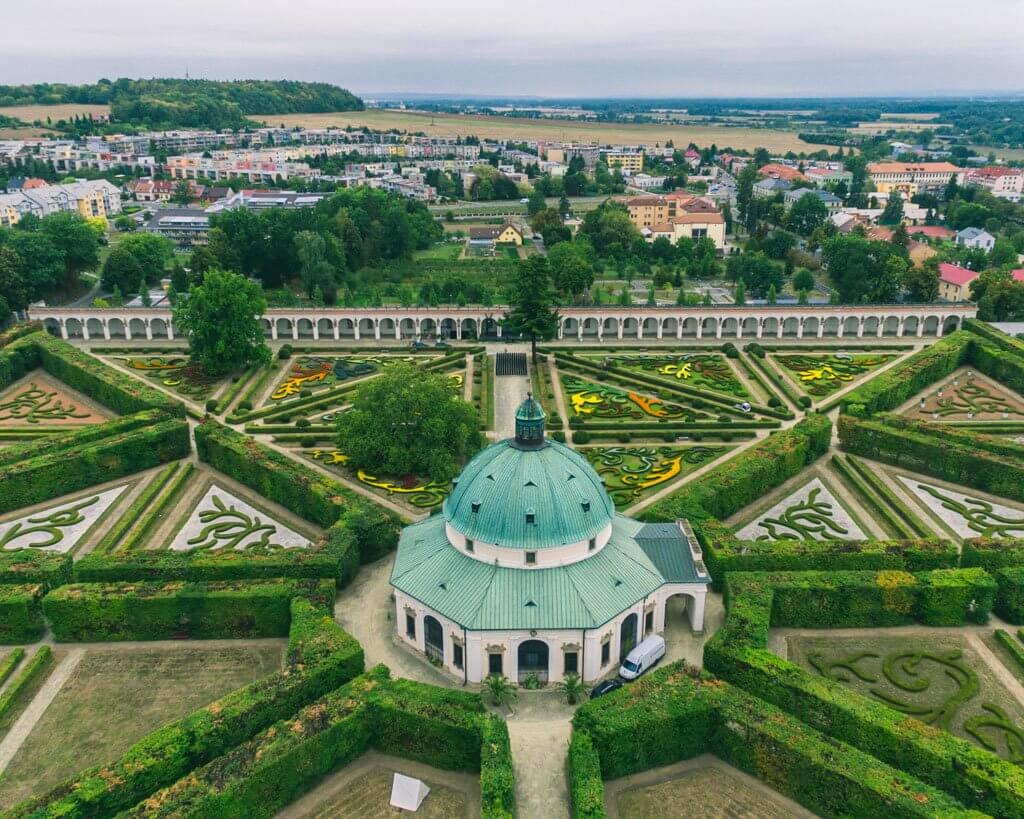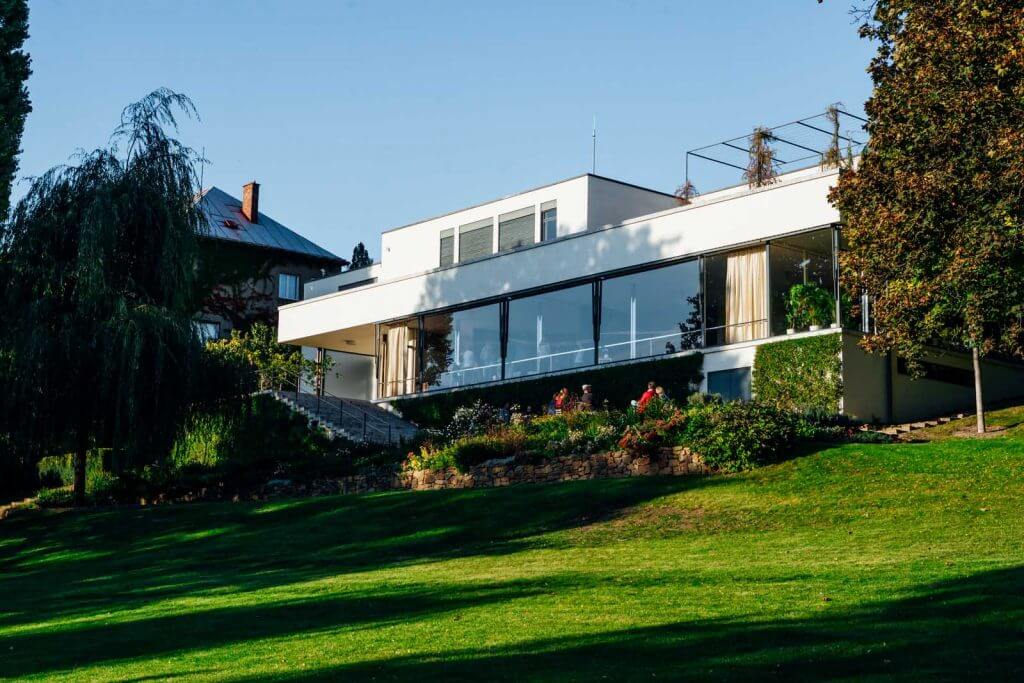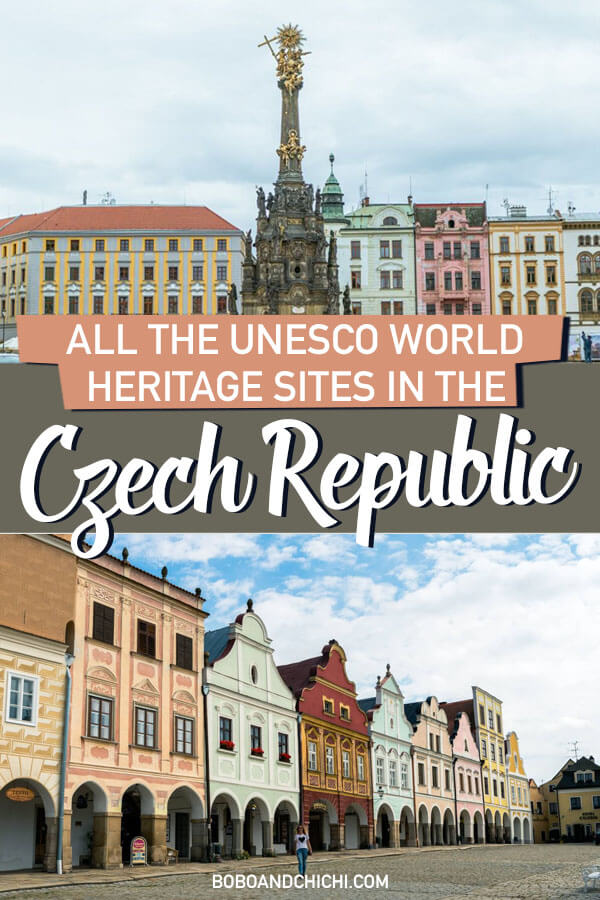Did you know there are 12 stunning Czech Republic UNESCO sites? With so many gorgeous towns, history, and culture, it comes to no surprise.
From entire town centers to castles and gardens, we recommend trying to see these cultural points of interest during your Czech Republic itinerary.
Here’s our breakdown of all 12 Czech Republic UNESCO World Heritage sites.
What are UNESCO World Heritage Sites?
World Heritage Sites are selected by the United Nations Educational, Scientific, and Cultural Organization (UNESCO) which are usually a landmark or area that has historical, cultural, or scientific importance.
Once named a UNESCO World Heritage Site, the site is then legally protected by international treaties for preservation for the interest of humanity.
In order to be named a UNESCO World Heritage Site, the landmark or area typically need to be unique or have a special cultural or identifiable significance historically or geographically.
All 12 UNESCO Sites in the Czech Republic
1. Historic Center of Prague
Besides being one of the most beautiful cities in Europe, no the world, the historical center of Prague is a Czech Republic UNESCO site!
The historical center of Prague includes Old Town, Lesser Town, and New Town. Most of the city was built between the 11th – 18th centuries, but the most notable city monuments are from the 14th century built by Charles IV, under the Holy Roman Empire.
Since many of these monuments and architecture is from the Middle Ages, Prague is one of the largest and most beautifully preserved medieval cities in the entire world where you can find some of the best examples of Gothic architecture.
Because of its beauty and unique abundance Gothic architecture, Prague has been called one of the most beautiful cities in the world and attracts millions of visitors each year to explore the amazing historical monuments and historical center.
We’ve spent quite a bit of time exploring the city, so we know all the best things to do in Prague as well as where to stay, how to escape the crowds, and the best day trips to do.
2. Historic Center of Telč
The colorful row of historic homes that make up the historic city center of Telč in Southern Moravia was named a Czech Republic UNESCO site in 1992.
The beautiful city center is made up of beautifully preserved Renaissance and Baroque homes. What you see today was built after a devastating fire in the 14th century when all the wooden homes burned to the ground.
Zacharias of Hradec decided to change the castle from Gothic to Renaissance and the townspeople followed and the homes were also then constructed of stone and then a network of manmade ponds were built to help against any future fires.
Highlights include the row of gorgeous homes in the city center and the chateau.
There are also a maze of underground tunnels that interconnect the entire town below the streets used for food storage and a way to escape town if there was another huge fire or invaders.
Read more about Telč, Czech Republic
3. Historic Center of Český Krumlov
The entire historic city center of Český Krumlov has been crowned a UNESCO site in the Czech Republic. It’s a great example of a central European medieval town that has been carefully preserved over five centuries.
There are many things to do in Český Krumlov, but the big one is to visit its 13th-century castle made from a mix of Baroque, Renaissance, and Gothic architecture. The castle is the focal point in town and can’t be missed. It is said that Český Krumlov castle is the 2nd largest in the Czech Republic, coming in closely behind Prague Castle.
Located on the banks of the winding Vltava River in South Bohemia, it really does look like something straight out of a fairytale.
FUN FACT
Český Krumlov Castle is home to one of the world’s best-preserved Baroque Theaters. You can tour the castle theater but spaces are limited as humidity and temperatures must be controlled at all times for preservation.
4. Kutná Hora
The rich silver mining town of Kutná Hora made the Czech Republic UNESCO site list thanks to the historic town center, Church of St. Barbara, and Cathedral of our Lady at Sedlec.
Because of the silver mining that brought much wealth to Kutná Hora, it was an important place not only for Bohemia but also as a political player in Europe. Because of this, you can tell in the city’s architecture and monuments that there was alot of prosperity here.
There are many things to do in Kutna Hora. This includes the Gothic church of St. Barbara, Santini’s Church of the Assumption of Our Lady, Sedlec Ossuary, the Italian Court, and the Jesuit College plus more that make it an incredible stop while visiting the Czech Republic.
The Church of St. Barbara is famous for its late Gothic period architecture, the Cathedral of Our Lady at Sedlec is famous for its restoration from the 18th-century in Baroque style, and the historic city center has beautifully preserved medieval foundations.
FUN FACT
The Church of St. Barbara was completely funded by the local silver miners and took over 600 years to complete finishing construction in 1905.
5. Lednice & Valtice Cultural Landscape
This UNESCO Czech Republic site is a perfect example of how an entire area can be a registered site.
Located in the heart of Czech Republic’s wine country in South Moravia the ruling Lichtenstein family shaped the landscape after their two Baroque, classical, and Neo-gothic castles. This makes the area one of Europe’s largest artificial landscapes.
The entire surrounding landscape underwent man-made design with architects to be fashioned like English landscapes. This included tedious and extensive work such as digging new channels of the Dyje River to raising the level of Lednice Park.
Read more about where to explore in South Moravia
FUN FACT
You can go wine tasting in the Wine Salon in the cellar of Valtice Chateau for an unforgettable experience. Two of our favorite castles in the Czech Republic are also in this area, Valtice and Lednice Chateaux.
6. Litomyšl Castle

Litomyšl Castle was named a Czech Republic UNESCO site in 1999.
It was built in the 16th-century in an Italian arcade-style architecture as well as having Baroque touches that were added in the 18th-century. It was built on the site of a medieval castle by Vratislav of Pernštejn.
FUN FACT
A famous Czech composer by the name of Bedřich Smetana was born in the castle’s brewery in the year 1824.
7. Pilgrimage Church of St. John of Nepomuk at Zelená Hora
The Pilgrimage Church of St. John of Nepomuk at Zelená Hora is another example of fine work by Santini who we mentioned in Kutná Hora earlier on this Czech Republic UNESCO list.
The star-shaped complex and design are between Neo-Gothic and Baroque styles of architecture.
The star shape of the entire structure has 5 points to reference the 5 stars in the halo of St. John of Nepomuk, who was martyred in 1393 in the Vltava River by Wenceslaus. This pilgrimage church was built to honor St. John of Nepomuk in Vysocina in the early 18th-century.
It is said that Nepomuk was the confessor of Wenceslaus’ wife which led to jealousy and caused his murder and for him to be tossed over the Charles Bridge into the Vlatava River in Prague. Learn more about the history and story behind St John of Nepomuk, the martyr saint of the Czech Republic and Central and Western Europe.
INTERESTING FACT
The five stars on St. John of Nepomuk’s halo represent the stars in the sky the night of his death. He is now considered the protector from floods and drowning and is often seen as statues on bridges including the Charles Bridge in Prague. Once you’re familiar with him, you’ll start to see him everywhere around the Czech Republic!
Also, check out the rest of the Vysočina UNESCO Sites here.
8. Holašovice Historic Village
The next Czech Republic UNESCO site is the historic village of Holašovice, not to be confused with the Prague neighborhood Holešovice in Prague 7, is a great representation of a traditional central European village. Visiting was actually one of our favorite unique things to do in the Czech Republic.
Set in the beautiful landscape South Bohemia you can get an idea of what rural life consisted of here in Holašovice, as it is set far away from anything else.
Named a Czech Republic UNESCO site in 1998, the town is so remote that it doesn’t see the hoards of tourists other popular Czech Republic UNESCO sites see. It’s actually quite easy during peak season to schedule a visit around the occasional tour bus.
If there happens to be a tour bus while you’re visiting on your own, you can sit and enjoy a beer until they move along and you’ll most likely have this Czech Republic UNESCO site to yourself!
The entire population of Holašovice was almost completely wiped out between the years of 1520 – 1525 due to the bubonic plague. There were only two survivors!
It took years for the local population to recover and ended up recruiting people from Austria and Bavaria to move here.
If that wasn’t hard enough, many of the inhabitants left and abandoned their farms during the Communist regime in the 20th century and the town was pretty much uninhibited until 1990.
Because of all the years of no one being here, Holašovice is very well preserved and a great example of a rural, traditional central European village.
The homes here are considered South Bohemian folk Baroque style and are from the 18th & 19th centuries, however, there has been a village here since the Middle Ages.
FUN FACT
Holašovice has its very own “Stonehenge” located in a field just a short walk from the town center, you can actually follow the signs. It’s quite peculiar and there’s no science or wild story behind this Stonehenge other than someone just decided to build it. At least that’s what we were told.
9. Holy Trinity Column in Olomouc
The next Czech Republic UNESCO site is the Holy Trinity Column of Olomouc in Moravia. It’s located in the Upper Square of the city, there’s also a Lower Square and was erected to pay tribute to the plague.
The column built in the 18th century and was made as gratitude by the locals for the of the plague that swept across Moravia in the 16th century. They built the trinity columns to thank God for ending the plague.
You can find that many towns and cities across Central Europe have these as well, this one in particular, is considered one of the most incredible examples and therefore was titled with a UNESCO status.
The column took 40 years to complete and is very symbolic to the locals. During the Prussian War, the Holy Trinity Column was struck by a shot and severely damaged. The locals begged their enemy to stop shooting near the column, and they did.
The column has since been repaired and there is a golden cannonball in the place where the column was struck.
Read more about all the amazing things to do in Olomouc
FUN FACT
Olomouc has its very own cheese and a socialist-themed astronomical clock. The original clock was destroyed by the Germans during the last night of fire in 1945 when rebuilt locals decided to make the clock to honor the people during socialist times.
10. Jewish Quarter & St Procopius’ Basilica in Třebíč
The next Czech Republic UNESCO site is the Jewish Quarter and St Procopius’ Basilica in Třebíč located in the Moravian part of the Vysočina Region of the country.
The Romanesque and Gothic Basilica of St. Procopius is home to the second oldest fresco paintings in Moravia. The best-preserved area is the crypt that was once the burial place of the monks that ran the monastery.
The Jewish Quarter is considered one the best preserved Jewish ghettos in Europe. Made up of two synagogues, a cemetery, and narrow roads with small homes and buildings. The Jewish Quarter even today is a great display of what life and community was like for this population.
Both of these are historic reminders of the co-existence between both Christianity and Judaism as religions between the Middle Ages through the 20th-century
FUN FACT
The Jewish Quarter of Třebíč is the first independent Jewish monument to be honored outside of Israel.
11. Gardens & Castle at Kroměříž
Located in the Zlín region, the gardens and castle in Kroměříž were crowned the status of a Czech Republic UNESCO site for their well preserved Baroque castle and gardens.
The city of Kroměříž is considered one of the most beautiful historic cities in the country and was home to where the bishops of Olomouc had their summer residence at the Archbishop Palace, or the castle and pleasure garden.
The garden is known as a pleasure garden for the bishops who would bring his guests here to admire the ornate patterns of the beautiful Baroque gardens.
The gardens were built with complete symmetry and if you can catch a peek from above on the top of the colonnade you will easily see the patterns and symmetry for yourself along with the impeccable designs.
Some of the garden’s highlights include their collection of exotic trees, the Classicist semi-circle colonnade, and the elegant rotunda situated as the centerpiece for the gardens.
The success of Kroměříž started because of its location on the extension of the famous Silk Road, then in the 13th-century the Bishop of Olomouc decided to build his summer residence here and the bishops of Olomouc all followed suit using this beautiful escape to show off their religious wealth and power.
Read more about the best things to do in Kroměříž and the historical significance of this destination.
FUN FACT
Zlín is also home to Thomas Bata, founder of Europe’s most famous footwear brand. The Academy Award-winning film Amadeus was also filmed here in Kroměříž with many scenes filmed inside the Archbishop’s Palace.
12. Tugendhat Villa in Brno
The youngest of all the Czech Republic UNESCO sites is Tugendhat Villa in Brno. The villa was designated a preserved UNESCO landmark because it represents the movement of modern architecture to make its way to Europe in the 1920s.
The three-story villa was designed off more of a minimalist principle, which is opposite of all the local Baroque, Renaissance, and Gothic details found in many buildings and monuments throughout the country and Central Europe.
The architect was Ludwig Mies Van der Rohe, except he didn’t just design the Villa but also the furniture and the garden adjacent to the Villa.
FUN FACT
The family who owned Tugendhat Villa were a wealthy Jewish family and had to flee to Switzerland in 1938, only 8 years after the completion of their home. You can read their whole story in the book, the Glass Room.
For more tips on planning your trip, don’t miss our best tips in our Czech Republic travel guide!
Liked this post about the Czech Republic UNESCO sites? Bookmark for later or share the love below on Pinterest.
